Does Yarmouth Runic Stone Describe A Trans-Atlantic Viking Voyage?
Ellen Lloyd - AncientPages.com - In 1812, a Yarmouth doctor, Richard Fletcher stumbled upon a mysterious 400-pound boulder in a salt marsh in the Nova Scotia area, in Canada. The mysterious stone is covered with an inscription consisting of only fourteen characters, but the question remains - who wrote it?
Can the Yarmouth Runic Stone offer evidence Vikings made a Trans-Atlantic journey? Credit: Adobe Stock - Nejron Photo
This particular inscription has puzzled researchers for decades and some believe the characters are Norse runes. Thousands of Norse inscriptions made in stone, wood, and metal have been unearthed, and each item gives us a glimpse into a culture that believed in the power and protection of the gods, telling fortunes and casting spells, and the glory of war.
Readers of Ancient Pages will know that runes, God Odin's secret language played an important role in the lives of the Vikings.
'Calling of Vikings,' by Viktor Vasnetsov Viktor Vasnetsov (1848-1926) - Credit: WikiPaintings - Public Domain
Whether the inscription on the Yarmouth stone, also known as the Fletcher Stone is genuine or not has never been determined. Some think it is nothing but a hoax, while others say it’s just a work of Mother Nature. However, there are also other interpretations that could shed more light on this puzzling inscription.
The Yarmouth Runic Stone is very interesting in the history of Yarmouth. Most people think that it was left by the Vikings — that’s the general theory — but there are lots of other theories. Basically, it was found towards the end of Yarmouth harbor in 1812 by Doctor Fletcher. Some people, notably the descendants of Dr. Fletcher, always felt that he did the carving because he was apparently a practical joker: and his family always felt that he did it. Lots of others have felt that the Vikings left the stone, and it’s been translated a couple of times by various people from the Runes.
One translation was made by Henry Phillips Junior around about 1875, and he felt that the Runes read either ‘Hako spoke to his men’ or ‘Hako’s son spoke to his men,” said Curator, Eric J. Ruff of the Yarmouth County Museum where the stone is preserved and displayed.
The Yarmouth Runic Stone as currently displayed at the Yarmouth County Museum. Credit: Public Domain
Dr. Barry Fell suggested that the Yarmouth inscription could be written in early Basque, reading "Basque people have subdued this land". His theory was based on the possibility that such stones were deliberately set up along the coast to inform other travelers that territory had already been claimed.
Another possibility, as proposed by Elbert E. Esmiol is that we are seeing a precious artifact left by visitors from the Mycenaean civilization, one of the greatest civilizations of Greek prehistory famous for its majestic architecture and imposing monuments.
The Mycenaean civilization which, according to legend, had been ruled by King Agamemnon, the conqueror of Troy, sprang to life suddenly in southern and central Greece in about 1600 BC.
Closeup of the apparent inscription. Credit: Wreck Smurfy/Public Domain
Developing from seemingly nothing, this civilization would grow to prominence and become one of the most dominant civilizations of the Aegean for hundreds of years.
Esmiol proposed that the inscription is in one of the royal Mycenaean alphabets, and reads as follows:
"Exalted Throne: The pure Lions of the royal household sent into the sunset to protect, to seize, and to make a hole in the mighty waters at the summit have been sacrificed - the whole corporate body".
Yet another theory, proposed by John Campbell is that the inscription is in Old Japanese and reads "wabi deka Kuturade bushi goku" - "Katurade, the eminent warrior, has died in peace". According to the Yarmouth County Museum, the Yarmouth stone is real, but the origin of the inscription remains unknown.
Updated on June 23, 2021
Written by - Ellen Lloyd – AncientPages.com
Copyright © AncientPages.com All rights reserved. This material may not be published, broadcast, rewritten or redistributed in whole or part without the express written permission of AncientPages.com
Expand for referencesMore From Ancient Pages
-
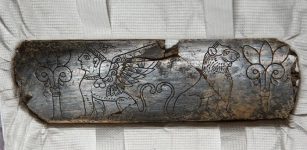 Unique 2,800-Year-Old Ivory Object Unearthed At Hattusa
Archaeology | Nov 14, 2023
Unique 2,800-Year-Old Ivory Object Unearthed At Hattusa
Archaeology | Nov 14, 2023 -
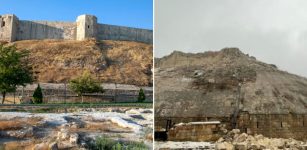 Ancient Gaziantep Castle Destroyed In Turkey Earthquake
News | Feb 6, 2023
Ancient Gaziantep Castle Destroyed In Turkey Earthquake
News | Feb 6, 2023 -
 Towering Sacred Mt. Fuji: Abode Of The Immortals In Ancient Japanese Beliefs
Featured Stories | Feb 23, 2017
Towering Sacred Mt. Fuji: Abode Of The Immortals In Ancient Japanese Beliefs
Featured Stories | Feb 23, 2017 -
 2000-Year-Old Room With Frescoes Discovered In Central Rome, Italy
Archaeology | Dec 4, 2015
2000-Year-Old Room With Frescoes Discovered In Central Rome, Italy
Archaeology | Dec 4, 2015 -
 Earliest Evidence Of Evolutionary Trait That Enabled Dinosaurs To Become Giants – Brazilian Fossil Reveals
Evolution | Jun 21, 2023
Earliest Evidence Of Evolutionary Trait That Enabled Dinosaurs To Become Giants – Brazilian Fossil Reveals
Evolution | Jun 21, 2023 -
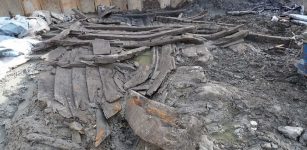 Three 17th Century Shipwrecks Discovered In Central Gothenburg, Sweden
Archaeology | Oct 8, 2019
Three 17th Century Shipwrecks Discovered In Central Gothenburg, Sweden
Archaeology | Oct 8, 2019 -
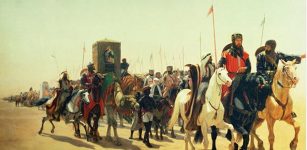 On This Day In History: Richard The Lionheart Arrives To The Holy Land – On June 8, 1191
News | Jun 8, 2016
On This Day In History: Richard The Lionheart Arrives To The Holy Land – On June 8, 1191
News | Jun 8, 2016 -
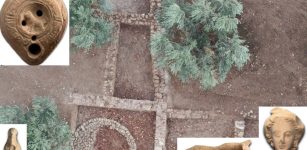 Ancient City Of Tenea Built By Trojan Prisoners Reveals More Archaeological Secrets
Archaeology | Feb 15, 2023
Ancient City Of Tenea Built By Trojan Prisoners Reveals More Archaeological Secrets
Archaeology | Feb 15, 2023 -
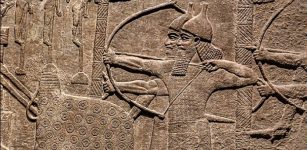 Tiglath Pileser III: Neo-Assyria’s Strong King Who Built A Mighty Empire
Featured Stories | May 2, 2019
Tiglath Pileser III: Neo-Assyria’s Strong King Who Built A Mighty Empire
Featured Stories | May 2, 2019 -
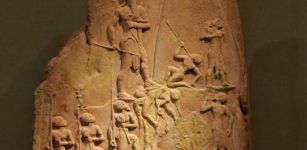 Did Climate Change End The Akkadian Empire?
Civilizations | Jul 17, 2019
Did Climate Change End The Akkadian Empire?
Civilizations | Jul 17, 2019 -
 Mystery Of Ancient, Overlooked Calico: Early Man Site In The Mojave Desert Of North America
Civilizations | Sep 9, 2021
Mystery Of Ancient, Overlooked Calico: Early Man Site In The Mojave Desert Of North America
Civilizations | Sep 9, 2021 -
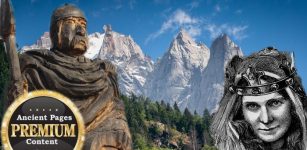 Ancient Mystery In The Alpes Remains Unsolved Because Of Contradicting Information
Ancient Mysteries | May 15, 2018
Ancient Mystery In The Alpes Remains Unsolved Because Of Contradicting Information
Ancient Mysteries | May 15, 2018 -
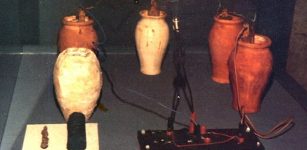 Was Prehistoric Baghdad Battery A Unique Find Of The Ancients? – Did Its Manufacturers Discover Electricity By Accident?
Ancient Technology | Mar 8, 2019
Was Prehistoric Baghdad Battery A Unique Find Of The Ancients? – Did Its Manufacturers Discover Electricity By Accident?
Ancient Technology | Mar 8, 2019 -
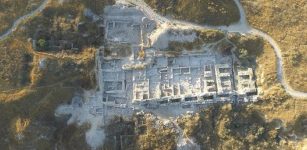 Radiocarbon Dating Sheds Light On Historical Events In The Ancient City Of Gezer
Archaeology | Nov 15, 2023
Radiocarbon Dating Sheds Light On Historical Events In The Ancient City Of Gezer
Archaeology | Nov 15, 2023 -
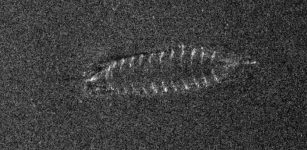 Sonar Images Reveal The Existence Of A 700-Year-Old Shipwreck At The Bottom Of Lake Mjøsa, Norway
Archaeology | Nov 22, 2022
Sonar Images Reveal The Existence Of A 700-Year-Old Shipwreck At The Bottom Of Lake Mjøsa, Norway
Archaeology | Nov 22, 2022 -
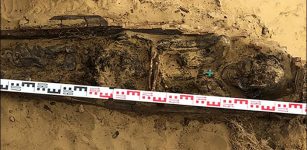 Mysterious Mummified Woman With A Christian Cross On Her Chest Dashes Hopes Of Finding First Russian Fortress In Yakutia
Archaeology | Dec 12, 2019
Mysterious Mummified Woman With A Christian Cross On Her Chest Dashes Hopes Of Finding First Russian Fortress In Yakutia
Archaeology | Dec 12, 2019 -
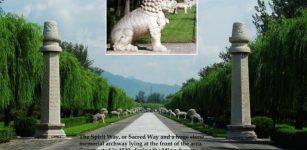 Amazing Thirteen Ming Tombs: Gigantic Stone Animals And Human Figures Were Symbols Of Royal Power
Civilizations | Oct 1, 2018
Amazing Thirteen Ming Tombs: Gigantic Stone Animals And Human Figures Were Symbols Of Royal Power
Civilizations | Oct 1, 2018 -
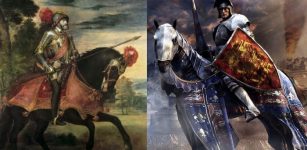 The Word Freelancer Originates From Medieval Mercenary Knights
Ancient History Facts | Feb 25, 2016
The Word Freelancer Originates From Medieval Mercenary Knights
Ancient History Facts | Feb 25, 2016 -
 The Invisible Plant Technology Of The Prehistoric Philippines
Archaeology | Jul 1, 2023
The Invisible Plant Technology Of The Prehistoric Philippines
Archaeology | Jul 1, 2023 -
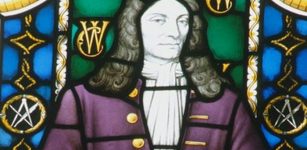 Sir Christopher Wren – Genius Mind Of Most Influential British Architect Of All Time
Featured Stories | Feb 22, 2016
Sir Christopher Wren – Genius Mind Of Most Influential British Architect Of All Time
Featured Stories | Feb 22, 2016




